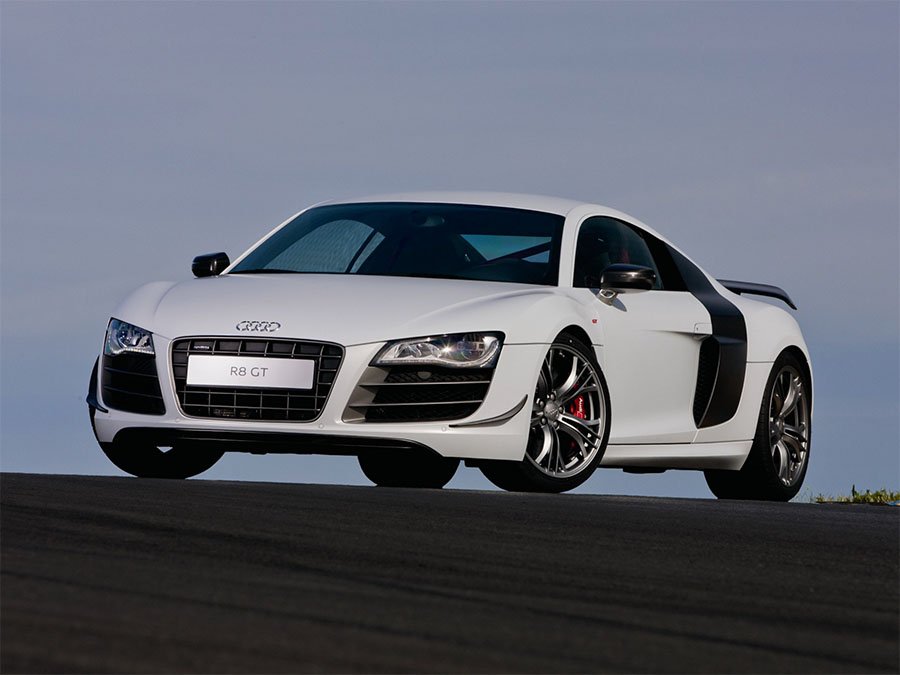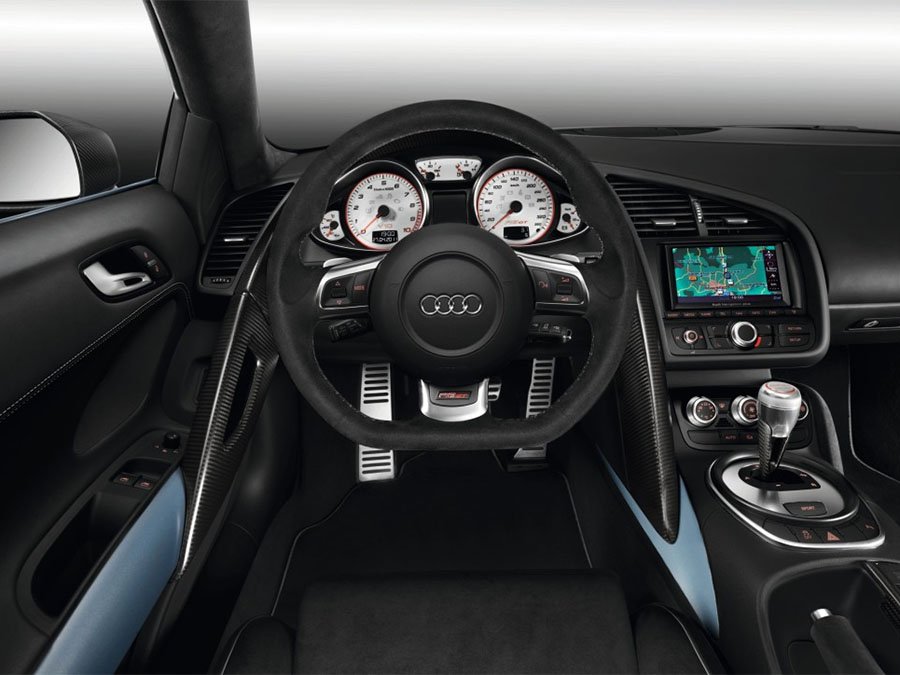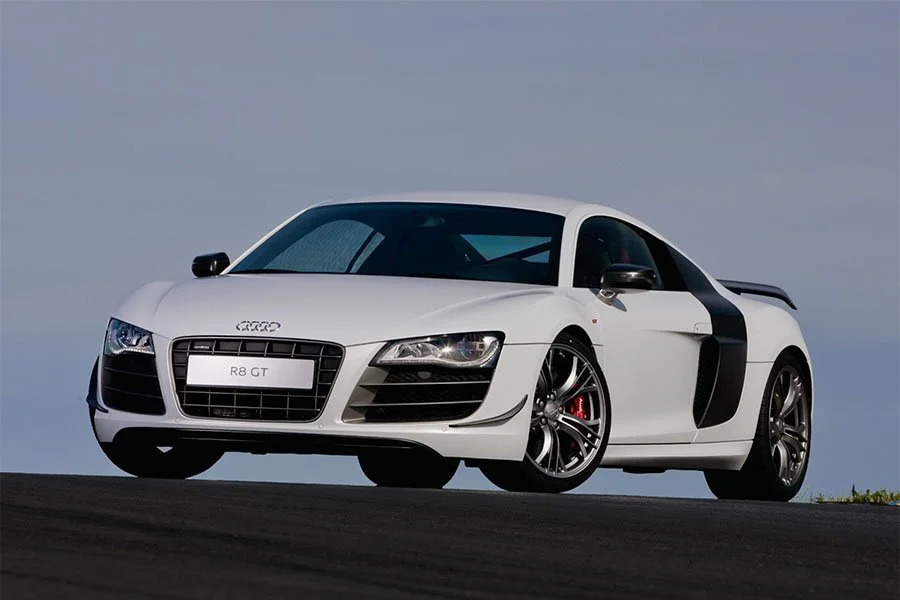Guide: Audi R8 GT (Type 42) - a Historical & Technical Appraisal
/BACKGROUND
When Audi conceived the R8, the idea was to produce a flagship mid-engined supercar that could also spearhead the firm’s move into the popular discipline of GT racing.
The resultant R8 LMS competition car was eligible for all major GT championships where it went head-to-head with similar machinery from Ferrari, Lamborghini, Aston Martin and Porsche. As expected given Audi’s form in LMP1 and the DTM, the R8 LMS proved extremely effective,
The R8 LMS also served as the inspiration for a more driver focused iteration of the standard R8 road car – something in the mould of a Lamborghini Gallardo Superleggera, Porsche 911 GT3 and Ferrari 458 Speciale.
In this vein, the highly anticipated R8 GT was a lighter, sharper and more powerful variant of the critically acclaimed 5.2-litre R8 V10.
Audi introduced the R8 GT at the annual Volkswagen-Audi-themed Worthersee Treffen in the Austrian Alps during May of 2010. Production was limited to 333 units. 90 of these were destined for the USA, 35 for the UK and the remaining 208 for the rest of the world.
Once this initial batch of fixed-head cars had been completed, Audi released a Spider variant with a similar array of performance modifications. As per the original, 333 of these open-topped cars were completed.
Audi originally announced the Spiders would all be constructed in left-hand drive, however, they eventually reversed this decision and 66 UK market cars were built in right-hand drive. 50 of the Spiders were exported to the US.
CHASSIS
The GT used the standard R8’s lightweight aluminium spaceframe chassis which was itself effectively a long wheelbase version of the Lamborghini Gallardo unit. There was, however, some special ancillary equipment such as an ultra light weight magnesium instead of carbonfibre engine subframe. Also new was a strong, lightweight polycarbonate bulkhead between the passenger cell and the engine compartment.
To further reduce mass, Audi fitted a lightweight battery and no sound deadening for the engine bay.
The four-wheel drive system was retained and typically sent 15% of the torque to the front axle.
Power-assisted steering was also kept, as was the Bosch ESP 8.0 Electronic Stability Programme that managed the anti-lock brake system, electronic brakeforce distribution and traction control.
One absent feature was the complicated Drive Select system that juggled suspension, throttle and gearbox settings.
Ride height was lowered by 10mm on the GT. Stiffer springs and dampers were manually adjustable with higher static negative camber rates for increased grip and turn-in response. Higher front and rear wheel camber rates made the handling more agile than the standard model.
The independent suspension layout comprised forged aluminium double wishbones all round plus a track rod either side at the rear.
Carbon ceramic brake discs were fitted as standard. The fronts were enlarged from 365mm to 380mm. The rears stayed at 356mm. Red-painted six-piston calipers were fitted all round.
Other special equipment included new five twin-spoke Y-design 19-inch diameter wheels. As usual, the fronts were 8.5-inches wide. The backs were widened from 10.5 to 11-inches.
Twin fuel tanks with a 75-litre capacity were mounted either side of the engine, up against the rear bulkhead.
ENGINE / TRANSMISSION
Power came from an uprated version of the 5.2-litre V10 engine that Audi had added to the R8 range in December 2008. This 90° V10 featured dual chain-driven overhead camshafts, four valves per cylinder and Fuel Stratified Injection (as pioneered on the R8 LMP racing car). Variable valve timing was employed for both the inlet and exhaust camshafts. The engine’s all-alloy construction included a block formed from ALUSIL (an aluminium-silicon alloy). Silicon crystal liners were also used.
Displacement was 5204cc thanks to a bore and stroke of 84.5mm and 92.8mm respectively. The compression ratio was 12.5:1.
In standard trim, the engine produced 518bhp at 8000rpm and 391lb-ft at 6500rpm. However, for the GT, Audi fitted the re-mapped motor used in the Lamborghini Gallardo LP560-4. Audi had acquired Automobili Lamborghini in 1998, the same year they also purchased Bugatti and Bentley.
As per the Gallardo LP560-4, the R8 GT pumped out 552bhp at 8000rpm and 398lb-ft at 6500rpm.
Visually, the GT’s engine differed from the regular R8 V10 on account of its red-painted cylinder head covers. There was also a lighter air intake module and thinner exhaust system with bigger tailpipes.
Unlike the regular R8 V10 (which could be specified as a six-speed manual), the R8 GT was only available with Audi’s R-tronic transmission which was a six-speed single-clutch automated manual with paddle shifters.
BODYWORK
To save weight, most of the GT’s exterior panels were lighter than standard. An array of uprated aero equipment was also installed.
Thinner glass was used for the windshield while the side and rear windows were fabricated from polycatbonate.
Thinner aluminium was used for the front lid.
The lift-up rear hatch, rear bumper and sideblades were made from carbondfibre reinforced plastic (CFRP).
Matt CFRP was used for the sideblades and exterior mirrors. The same material was also used for the GT’s special fixed rear spoiler and front canards. The double lip front splitter and enlarged rear diffuser were fabricated from gloss carbonfibre. These parts combined to give the GT more downforce without compromising the original 0.36 Cd value.
Other special exterior trim included red GT badges and a matt titanium grey front grille, licence plate bezel and rear slats.
INTERIOR
Inside, manually-operated lightweight buckets with GRP shells replaced the standard electric seats. Along with the flat-bottomed steering wheel rim, headliner, roof posts, knee pad and handbrake lever, the seats were upholstered in dark grey suede alcantara accented with contrast stitching in a choice of three colours.
Other weight-saving equipment included thinner carpet and a matt CFRP instrument binnacle.
A special gear selector lever bore each car’s serial number.
Synthetic sharkskin hide was used on the bulkhead to the engine compartment, in the door liners, on the instrument cowl and on the dashboard.
The instrument cluster housed white dials with R8 GT emblems. The transmission tunnel and the door liners sported body coloured inlays. The door sills trims were matt aluminium and decorated with an R8 GT logo.
Air-conditioning, satellite navigation, electric windows, a high end audio system, driver infotainment and park assist were standard equipment.
OPTIONS
Audi offered the R8 GT in a choice of four exterior colours: Samoa Orange Metallic, Ice Silver Metallic, Phantom Black Pearl Effect and Suzuka Grey. All four shades could be specified in either gloss or matt finish.
One of the most desirable optional extras that could be specified was the expensive Race Pack that comprised a bolt-in rollover bar (painted red or black), four-point Schroth harnesses (in red or black), a fire extinguisher and a battery kill switch concealed under an alloy Audi-branded lid on the centre console.
A front bar module with no street certification that turned the roll bar into a full-fledged cage was also available for use on race tracks. The Schroth harnesses could be specified with an optional rotary lock.
Buyers could specify semi-slick Michelin Pilot Sport Cup tyres, a long-range 90-litre fuel tank, a body-coloured front splitter and choice of wheel styles.
Interiors could be enhanced with carbonfibre instead of fibreglass bucket seats, a full leather upholstery pack, leather covered controls with contrast stitching, electric heated seats from the standard R8, seat belts in red, orange or grey, embroidered R8 GT logos for the seat backs and floor mats, a multi-function steering wheel, cruise control, an alcantara rear shelf, a 465 watt ten-channel Bang & Olufsen sound system with twelve speakers, a CD changer with Audi music interface and Bluetooth mobile phone interface.
The engine compartment could be specified with matt CFRP lining and LED lighting. CFRP inserts could also be applied to the doors, transmission tunnel and on the instrument panel. Red illuminated CFRP door sill trims were another potential upgrade.
WEIGHT / PERFORMANCE
The standard V10-powered R8 equipped with the R-tronic gearbox tipped the scales at 1625kg.
Thanks to its various weight-saving measures, the R8 GT was 100kg less (1525kg).
Top speed was now 199mph (up from 196mph) while the 0-62mph time dropped from 4.1 to 3.6 seconds.
The power-to-weight ratio leapt from 301bhp per ton to 362bhp per ton.
R8 GT SPIDER
The R8 GT Spider was unveiled at the Le Mans 24 Hours in June 2011.
It came with all the same upgrades as the GT Coupe and could be specified with an optional CFRP windshield frame.
Compared to the standard R8 V10 Spider with R-tronic (1725kg), the GT Spider weighed 85kg less (1640kg).
Text copyright: Supercar Nostalgia
Photo copyright: Audi - https://www.Audi.com








































